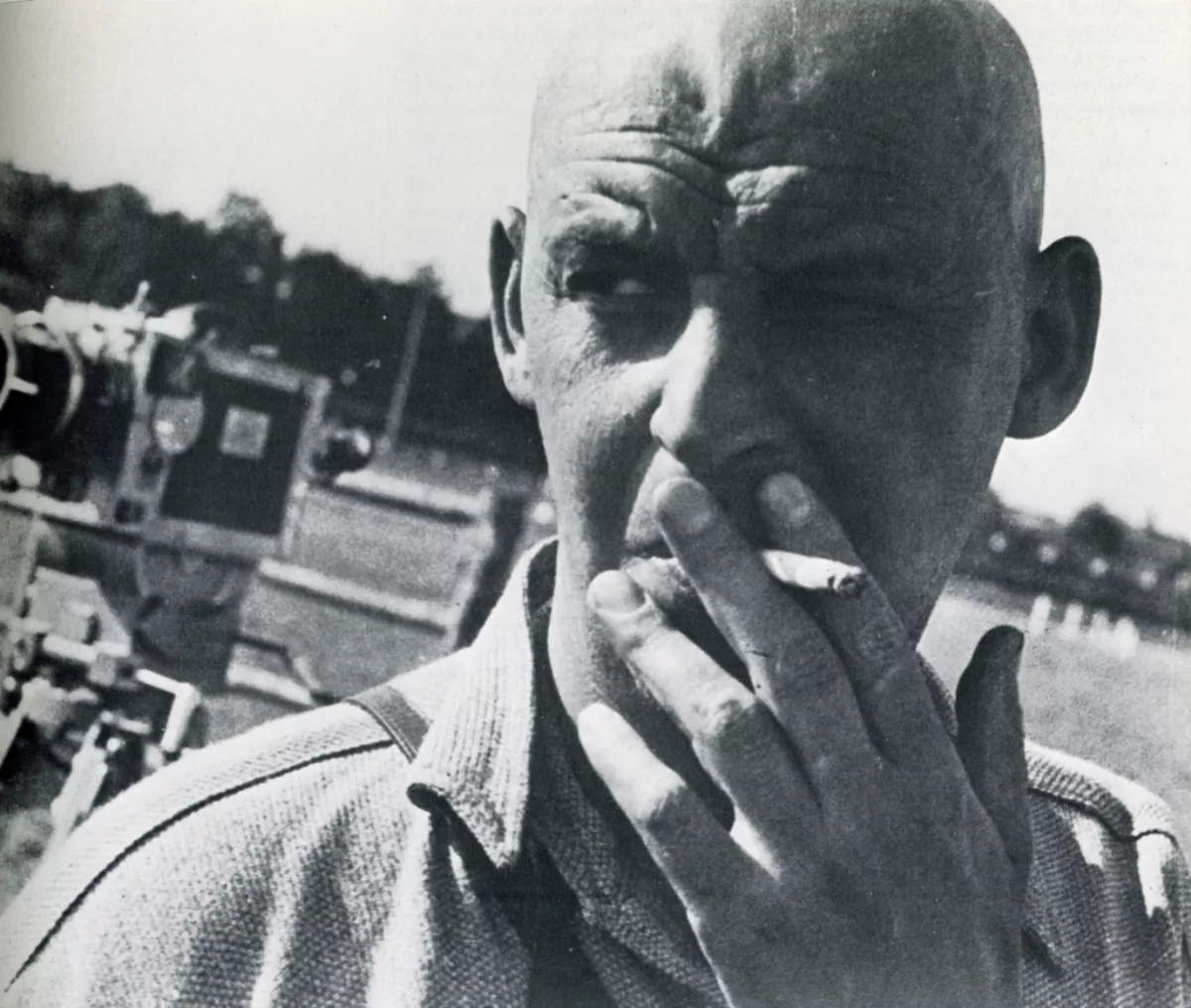 1.
1. Alexander Rodchenko was one of the founders of constructivism and Russian design; he was married to the artist Varvara Stepanova.

 1.
1. Alexander Rodchenko was one of the founders of constructivism and Russian design; he was married to the artist Varvara Stepanova.
Alexander Rodchenko worked as a painter and graphic designer before turning to photomontage and photography.
Alexander Rodchenko's photography was socially engaged, formally innovative, and opposed to a painterly aesthetic.
Alexander Rodchenko is known for developing the early corporate identity of the airline Dobrolyot, later Aeroflot, and designed its world-famous "Winged Hammer and Sickle" logo.
Alexander Rodchenko was born in St Petersburg to a working-class family who moved to Kazan after the death of his father, in 1909.
Alexander Rodchenko became an artist without having had any exposure to the art world, drawing much inspiration from art magazines.
In 1910, Alexander Rodchenko began studies under Nicolai Fechin and Georgii Medvedev at the Kazan Art School, where he met Varvara Stepanova, whom he later married.
Alexander Rodchenko's work was heavily influenced by Cubism and Futurism, as well as by Malevich's Suprematist compositions, which featured geometric forms deployed against a white background.
Alexander Rodchenko used a compass and ruler in creating his paintings, with the goal of eliminating expressive brushwork.
Alexander Rodchenko worked in Narkompros and he was one of the organizers of RABIS.
Alexander Rodchenko was appointed Director of the Museum Bureau and Purchasing Fund by the Bolshevik Government in 1920, responsible for the reorganization of art schools and museums.
Alexander Rodchenko became secretary of the Moscow Artists' Union and set up the Fine Arts Division of the People's Commissariat for Education, and helped found the Institute for Artistic Culture.
Alexander Rodchenko taught from 1920 to 1930 at the Higher Technical-Artistic Studios, a Bauhaus organization with a "checkered career".
Alexander Rodchenko gave up painting to concentrate on graphic design for posters, books, and films.
Alexander Rodchenko was deeply influenced by the ideas and practice of the filmmaker Dziga Vertov, with whom he worked intensively in 1922.
Alexander Rodchenko's first published photomontage illustrated Mayakovsky's poem, "About This", in 1923.
From 1923 to 1928 Alexander Rodchenko collaborated closely with Mayakovsky on the design and layout of LEF and Novy LEF, the publications of Constructivist artists.
Alexander Rodchenko's images eliminated unnecessary detail, emphasized dynamic diagonal composition, and were concerned with the placement and movement of objects in space.
Alexander Rodchenko joined the October Group of artists in 1928 but was expelled three years later, charged with "formalism", an accusation first raised in the pages of Sovetskoe Foto in 1928.
Alexander Rodchenko reduces its activity to simply a reeducation of taste based on certain new principles.
In 1935, the Masters of Soviet Art exhibition was held, but Alexander Rodchenko was only allowed to produce work for the exhibit under the command that he publicly denounce his previous formalist works.
Alexander Rodchenko returned to painting in the late 1930s, stopped photographing in 1942, and produced abstract expressionist works in the 1940s.
Alexander Rodchenko continued to organize photography exhibitions for the government during these years.
In 1921, Alexander Rodchenko executed the first true monochrome paintings, first displayed in the 5x5=25 exhibition in Moscow.